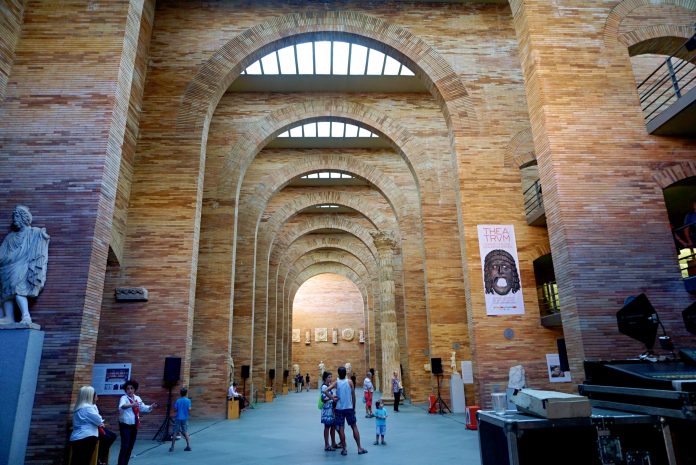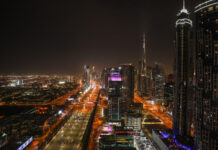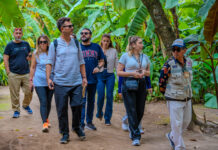A gastronomic adventure in Spain often begins in the most humble of tapas bars, but no matter what you are served, Jamon Iberico will gatecrash every meal – ah, Espania – buen apetito
Beverly Malzard
OK, OK, I love you Italy, and it’s been a fine romance, but I’m breaking up with you. I don’t do this lightly, it’s just that I have met Spain and spent some time there… and I’m in love. Aside from a few short periods in my misspent youth, Spain was just a passing flirtation. Someone I had a few drinks with, but recently, as a grown-up, I have discovered a few choice locations in Spain and have fallen head over heels.
As we couldn’t cover the entire country on this visit, we stopped short of a whistle-stop trip and picked the eyes out of culture, gastronomy, and a little history, taking some time to reflect on the cult of gluttony. Gluttony was my failing in Spain – but hey! The country shows no mercy and takes no prisoners – just eat!
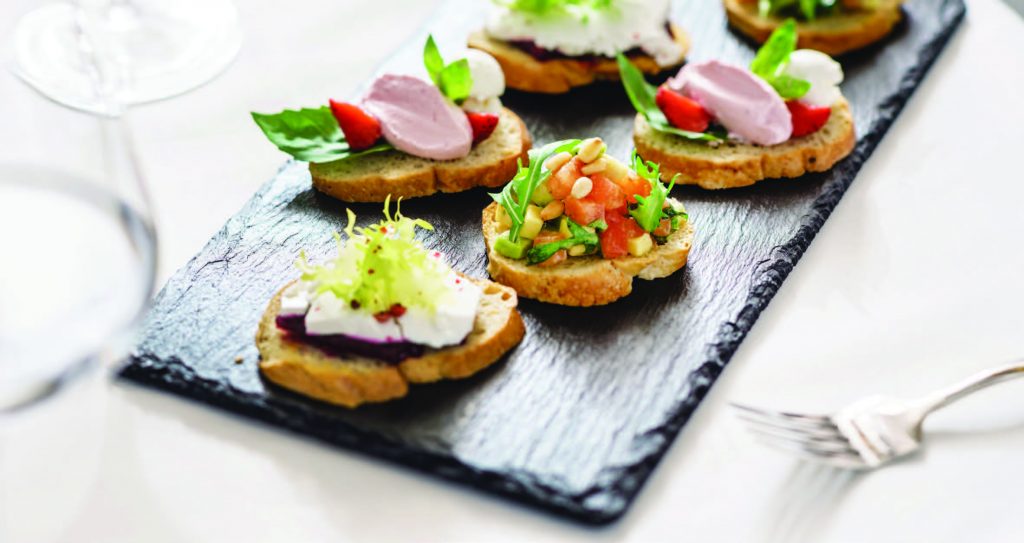
ENCHANTED TO VISIT MADRID FOR THE FIRST TIME
Arriving in Madrid at the end of a pleasant summer day, we drove along tree-lined streets and were delivered to Villa Magna in the elegant Salamanca barrio (precinct). This is the time when jetlag kicks in, but being in a new city is too exciting, and it’s afternoon – time for lunch, yay!
This is how the eating frenzy began. The first stop was a five-minute walk from the hotel to the beautifully restored and beloved Platea Madrid. The old art deco theatre has had a new life breathed into it and is today a fragrant complex of tapas bars, Michelin-starred restaurants and snack bars with rustic market-style décor. A cooling ale and a plate of potatas bravas (fried chunks of potato with spicy, paprika-laden tomato sauce) and small bites of battered cod – I was hooked.
And an early dinner eschewed. This was the funny part of the trip – our timing was not always conducive to being ‘hungry’. Breakfast isn’t a big deal here. Coffee and a little pastry, or maybe two coffees. Lunch is from anywhere between 2 pm and 4 pm, and if you are on a schedule, you’ll find yourself having dinner within a couple of hours after a banquet of lunch.

After a quick change in my room and a serious count of the threads in the cotton sheets, we were off to nearby Tatel, a fancy restaurant owned by Rafael Nadal and Julio Iglesias (both of them stood us up for a shared plate). The restaurant started filling up, and by the time we left at 10 pm (early, by local standards) the place was packed with well-dressed patrons – and on a weeknight too!
SPAIN’S MOST UNSPOILED AREA – EXTREMADURA
It was short; it was sweet, but after Madrid, there were windmills to tilt at further afield. We drive out of town and head just north of Andalusia, south of Castile and east of Portugal, into an untouched and unspoiled and autonomous region of Spain called Extremadura. Let that beautiful name roll off your tongue: Ex-trem-a-dura! (Some say it translates to the region’s physical character – hard and strong.)
We take a three-hour drive to discover the gastronomy of the region and to explore three immaculate medieval towns that contain outstanding Roman ruins, World Heritage sites, and some celebrity Iberian pigs – and I take the time to practice a slight lisp to perfect the “gracias” into “grathias” to inflict upon my new amigos.

We pass great swathes of dry fields (one more month before the rains in Spain come to the plains), small villages, and abandoned factories, their walls adorned with “hard and strong” graffiti, scattered along the highway.
HOME OF THE FIRST PERSON TO EXPLORE AMERICA
This brings us to Trujillo, with its cheery tree-lined streets, and we begin a meandering drive through sleepy narrow lanes to a vast open square – but the shutters up and “siesta” is whispered. This is the old town, a walled, hilltop community overlooking, the old countryside. The town is connected to the Americas through the discovery of the New World by Columbus in 1492. The first immigrants to South America came from this town, and the soldiers, known as the Conquistadors, spent the 15th and 16th centuries bringing the new lands to heel through brute force.
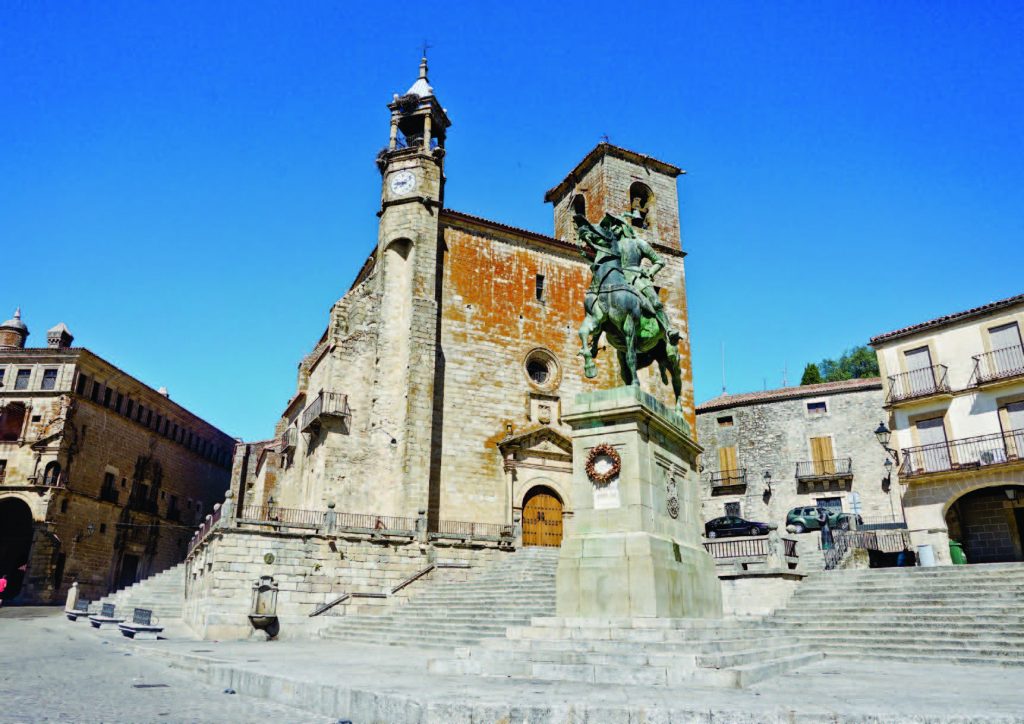
The most famous conquistadors were Hernán Cortes (1485–1547), who conquered the Aztec Empire; Francisco Pizarro (1471– 1541), who conquered the Inca Empire and founded Lima; Diego Paredes (1466–1534), who founded Trujillo in Venezuela; and Francisco de Orellana (1464–1536), who discovered the Amazon. All of these ‘hard and strong’ men were born in Extremadura.
ARCHITECTURE OF THE CONQUISTADORS STILL INTACT
On their return from the Americas to Trujillo, the Conquistadors built magnificent residences to celebrate the colonization of South America and their purloined wealth. The legacy of the conquest can be seen in much of Trujillo’s perfectly preserved architecture and the impressive bronze statue of Francisco Pizzaro (1471–1541), mounted on horseback, that dominates the town square.
Before arriving at Trujillo, we visit a stunning winery surrounded by vineyards that go on forever. An enormous sign shouts from the middle of sun-soaked fields reading “HABLA”.
The light is different here, and as the sun tilts from the noon position, the tapestry of grape vines is bathed in a golden glow. The winery opened around 16 years ago, and judging from the smiles on the faces of my compadres, the pale, elegant Rose is a hit!
After a long lunch in Trujillo that almost ran into dinner, we take a gentle, digestive stroll around the square then to bed to dream of Don Quixote!
On to a cheese factory the next day, which was a fulfilling experience. We are heading to the World Heritage city of Cáceres, stopping at Casar de Cáceres along the way to see the making of a local legendary cheese called Torta del Casar. And here we are, learning how this slice of heaven is made, and by whom.
Only two brands of this cheese are made in Spain. Happy sheep send their milk to the factory, and the 72-hour process of turning raw milk into unpasteurized cheese begins – it’s all down to a step-by-step tradition, a clean and perfectly timed process at the hands of master (mistress) cheesemaker Narcisia Municio. Municio is a rarity in the business, as one of only a handful of female cheesemakers. And what cheese she makes!

GASTRONOMY CAPITAL OF SPAIN – CÁCERES
We tried the end product, and if a little tear of pleasure was shed, I’m not ashamed. Cáceres has been named Spain’s Gastronomic Capital, and as a special treat, we are to have lunch at the two-star Michelin restaurant, Atrio.
This complete, ancient city from the Middle Ages oozes solid confidence – and so it should, having been embraced, attacked and colonized, enduring all with tenacity, resulting in a blended mix of Roman, Islamic, Northern Gothic and Italian Renaissance civilizations throughout history. And here stand the buildings to prove it. Some 30 towers still remain from the Muslim period in Cáceres, and our stroll over cobblestones and steps that have been polished by thousands of feet takes us into the Atrio Restaurant Hotel in the Plaza de San Mateo.
We take a tour of the hotel, with all of its cutting-edge flair and canonical design, all in harmony with its surroundings, passing through rooms with a simple ambiance of neutrals and natural light, while the terrace offers views of distant mountains and the neighborliness of historic Cáceres.
Before being served our endless degustation, we meet chef Tono (Juan Antonio Perez), a charming, modest man with an impish grin and a sparkling personality, who, with his partner Jose Polo, is behind this splendid, felicitous complex in which we are about to encounter the essence of Cáceres.
Our lunch followed a perfect pattern of delightful, imaginative dishes served with a light flourish. From a delicate bisque to silvery slivers of tuna carpaccio, and on and on and on until dessert, a dash of foam, fruit crème and a fine stick of chocolate. What a privilege for my eyes and stomach to be so gastronomically rewarded – for what I know not, but I happily accept the prize.


WORLD HERITAGE OF 2,000 YEARS
On to the last town on our tour of Extremadura, we enter the capital of the area – Mérida – which was founded in 25BC and is another World Heritage site. Perambulate around the town in the late afternoon and gasp at what unfolds – some of the finest Roman ruins in all of Spain can be found here. The beautiful Roman theatre is still used for open-air performances, while the amphitheater, the Temple of Diana and the Roman bridge are sights to behold.
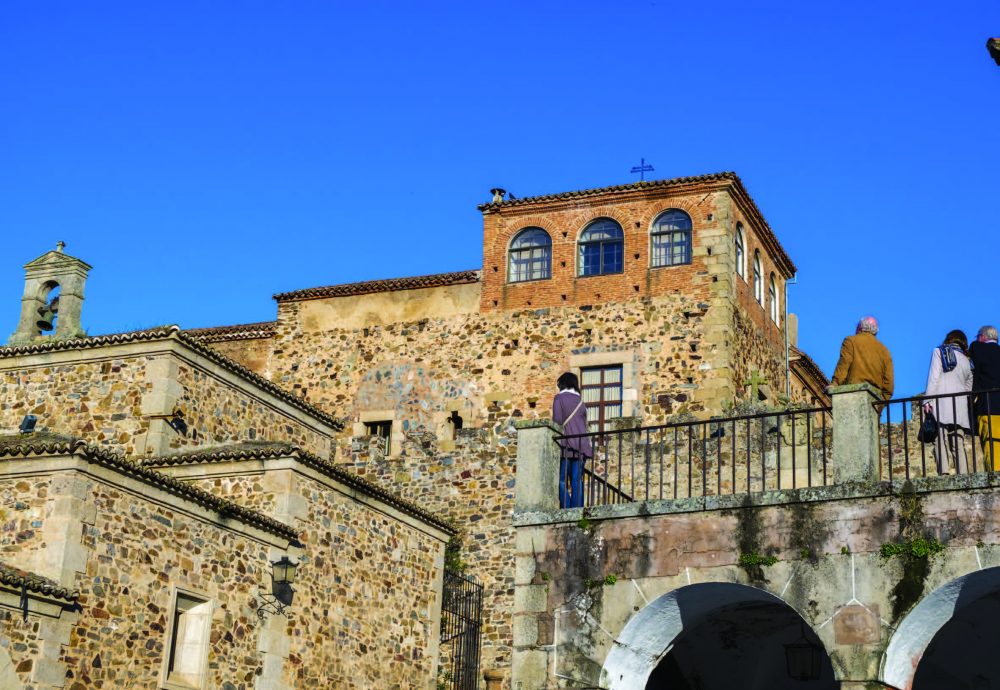
Back to the hotel, our accommodation for the night is the Parador de Mérida (in Spain and other Spanish-speaking countries, a Parador is a kind of luxury hotel, usually established in a converted historic building, such as a monastery or castle, and often owned and run by government tourism bodies), which was formerly a vast convent. My room is austerely furnished with few distractions, and later that night I pledge to lie quietly and confess my sins of gluttony, but until then, gee, is that the time? 11 pm – it must be dinner time. My last meal in the region, so we’ll go hard, we’ll go strong. Ole!




